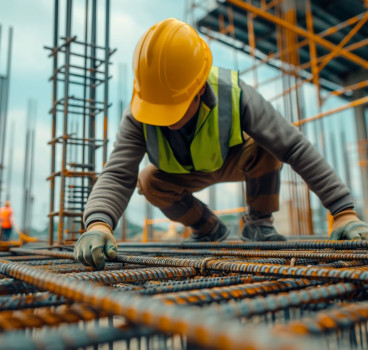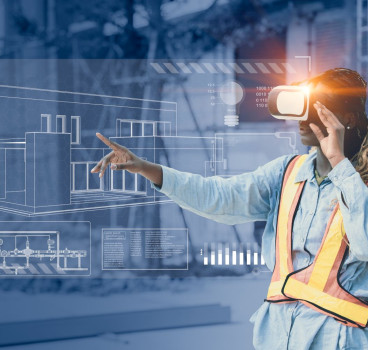The rush to sustainability and how it affects affordable housing
New Mexico, like many states in the USA and other countries across the world, is grappling with a persistent housing affordability crisis. Recent actions by the State-run Construction Industries Commission, aimed at bolstering energy efficiency and sustainability through new building codes, have ignited a heated debate about the potential consequences for housing affordability - and it is something we can all learn from – writes John Ridgeway.
The proposed codes mandate higher insulation standards and infrastructure for electric vehicle charging stations in new homes. While these measures align with broader sustainability goals, they come with a significant price tag. Estimates suggest a 10% to 20% increase in construction costs, translating to an additional $70,000 for the average New Mexican homebuyer.
This substantial cost increase raises serious concerns about the impact on housing affordability. For many families already struggling to enter the housing market, such an added expense could be insurmountable. The risk is that these well-intentioned regulations may inadvertently exacerbate the existing housing crisis, pushing homeownership further out of reach for a significant portion of the population.
The timing of these new codes is particularly unfortunate. New Mexico is actively working to address its affordable housing shortage through initiatives like the New Mexico Finance Authority and the state housing trust fund. These efforts, while commendable, may be undermined by the increased costs associated with the new building codes.
Furthermore, the process of adopting these codes appears to have lacked sufficient public input and economic analysis. It is essential to assess the full impact of these regulations, including their potential to disproportionately affect low-income and working-class families. A transparent and inclusive review process involving all stakeholders is crucial to ensure that the benefits of these codes are balanced against their costs.
The global affordable housing crisis
The affordable housing crisis is not confined to New Mexico - it is a pressing issue in many parts of the world. From developed nations to emerging economies, the rising cost of housing has made homeownership increasingly elusive for a significant portion of the population.
As cities grow and populations concentrate, the demand for housing outpaces supply, driving up prices. Rising income inequality exacerbates the housing affordability crisis, as low-income families struggle to compete with higher-income earners in the housing market.
In many urban areas, limited land availability also drives up the cost of land for development, which is passed on to homebuyers. The increasing cost of materials, labour and regulations can further contribute to higher housing prices.
However, while sustainability and energy efficiency are undoubtedly important, they should not come at the expense of housing affordability. A comprehensive approach is needed that addresses both challenges simultaneously. This may involve exploring alternative financing mechanisms, incentivising the development of affordable housing and investing in energy-efficient retrofits for existing homes.
Ultimately, the goal should be to create a state where all residents have access to safe, affordable, and sustainable housing. Striking the right balance between environmental goals and economic realities is therefore essential to achieving this vision.
The tension between environmental sustainability and housing affordability is a complex issue with far-reaching implications. The new building codes in New Mexico exemplify this challenge, where well-intentioned efforts to promote energy efficiency and reduce carbon emissions collide with the pressing need for affordable housing.
While the pursuit of sustainable building practices is commendable, it is crucial to avoid policies that inadvertently exacerbate existing inequalities. The increased costs associated with these new codes risk creating a two-tiered housing market, where only those with higher incomes can afford to purchase new homes. This could lead to a decline in homeownership rates, particularly among young families and low-income households.
To address this issue, policymakers must adopt a holistic approach that considers both environmental and economic factors. One potential solution is to offer incentives for builders and developers to incorporate sustainable features into affordable housing projects. This could involve tax breaks, grants, or low-interest loans to offset the increased costs of meeting the new building code requirements.
Additionally, exploring alternative financing mechanisms, such as green mortgages or energy performance-based financing, can help make sustainable housing more affordable for homeowners. These options can provide upfront incentives to adopt energy-efficient measures while spreading the cost of these improvements over time.
Furthermore, it is essential to invest in education and awareness campaigns to inform the public about the benefits of sustainable housing and the available incentives. By empowering consumers to make informed choices, we can foster a market for energy-efficient homes.
Another critical aspect is to focus on retrofitting existing homes to improve energy efficiency. While new construction is essential, retrofitting older homes can also contribute to reducing carbon emissions and creating more affordable housing options.
In conclusion, balancing the goals of sustainability and affordability requires a multifaceted approach. By carefully considering the economic impacts of new regulations, providing incentives for sustainable housing and investing in education and awareness, policymakers can create a path forward those benefits both the environment and the people of New Mexico and for that matter – the rest of the world.
As we have shown, this challenge is not unique to New Mexico. Many states and countries are grappling with similar issues as they strive to achieve a balance between environmental protection and economic prosperity. By sharing best practices and collaborating on solutions, policymakers can develop innovative strategies to address this complex problem.
Ultimately, the success of any policy depends on its ability to deliver tangible benefits to the people it is intended to serve. In the case of building codes, the focus should be on creating a built environment that is both sustainable and accessible to a wide range of residents. By striking this balance, policymakers can ensure a brighter future for both people and the planet.
Additional Blogs

What the UK can learn from global construction tech leaders
The UK construction sector stands at a critical crossroads. Mounting pressures - stagnant productivity, acute labour shortages, tightening safety requirements, ambitious carbon-reduction targets and...
Read moreAre architects losing their influence in the digital era?
For decades, architects have been the central creative force in construction, shaping the buildings we see and the way projects are conceived, communicated and delivered. Their role has been...
Read more

Why the word “Innovation” has lost its meaning in construction
“Innovation” has become one of the most overused terms in construction. It appears in the dozens of press releases we receive each day, conference talks and project reports, often without any real...
Read more